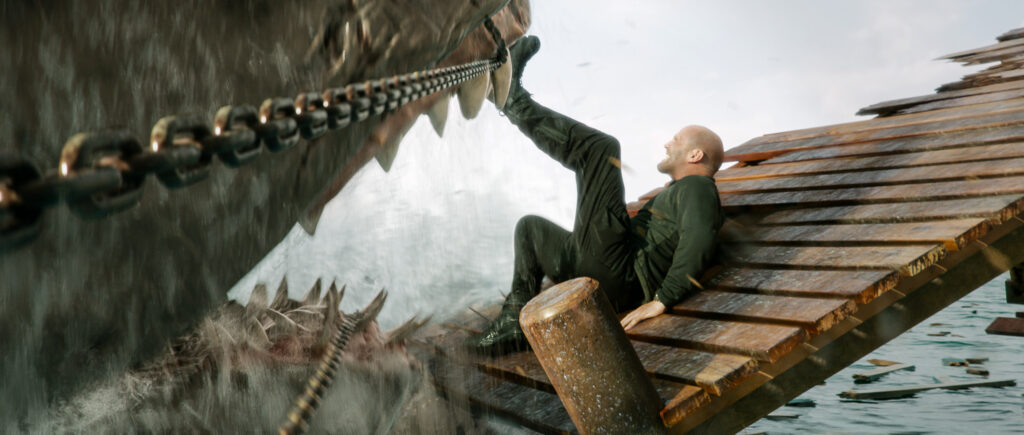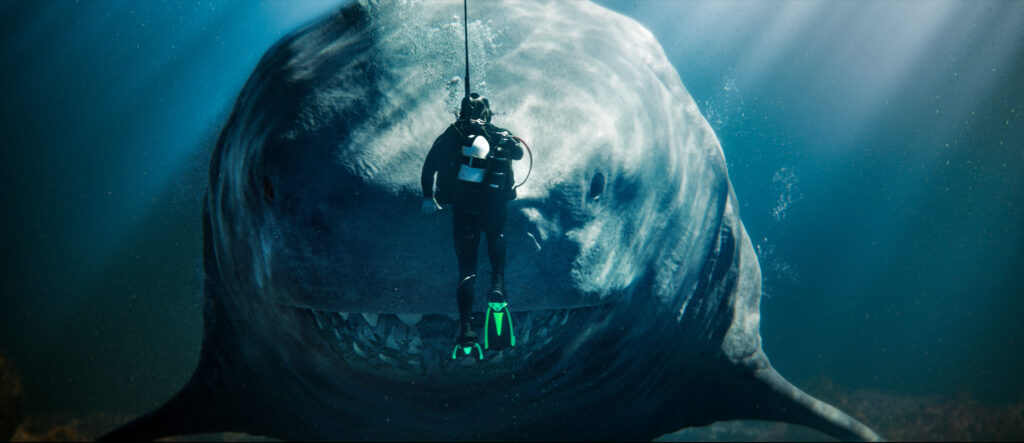Este jueves finalmente llegó a los cines “Megalodón 2: El gran abismo”, secuela del gran éxito de taquilla de 2018, que tuvo como protagonista a Jason Statham.
Nuevamente con Statham a la cabeza, los estudios Warner revelaron algunos datos curiosos sobre la filmación realizada en Tailandia y acerca de la naturaleza del temible “villano” del filme.
En primer lugar, además de Tailandia fueron utilizados los estudios Leavesden, pertenecientes a Warner Bros.
Vale recordar que en el verano d 2018, fecha en la que se estrenó la primera parte, la taquilla arrojó un total de 530 millones de dólares recaudados en todo el mundo.
Para crear la Isla de la diversión de la película, la producción utilizó principalmente el lugar de fiesta/playa Paradise Beach, en Phuket, que contaba con una pintoresca playa con un telón de fondo selvático. El equipo de diseño construyó elementos clave como un muelle y un restaurante para crear su lujoso destino turístico.
Asimismo, en el rodaje de todas las secuencias en agua —que requirieron unas 40 embarcaciones y más de 200 miembros del equipo— la producción utilizó un hotel cercano a Paradise Beach que contaba con un muelle privado. Este espacio permitió al equipo de trabajo anclar las embarcaciones de manera segura y pertinente.
Con el fin de registrar a los actores durante su trabajo bajo el agua, se rodó en el escenario D de Leavesden, que cuenta con un tanque de seis metros de profundidad y veinte de ancho.

Acerca de los megalodones
El megalodón (que significa ‘diente grande’) fue el tiburón más grande de todos los tiempos —y uno de los peces más grandes que han existido— con un peso de hasta 50 toneladas y más de 18 metros de longitud, que lo hacía unas tres veces mayor que el tiburón blanco actual. Vivieron hace entre 23 y 3,6 millones de años.
Estos ejemplares fueron descritos por primera vez en 1835 por el naturalista estadounidense Louis Agassiz, quien nombró la especie.
La estimación del tamaño del megalodón se basa en el descubrimiento de sus dientes fosilizados: nunca se ha encontrado un «esqueleto» completo de un megalodón. Se calcula que su mandíbula abarcaba 2.7 por 3.4 metros de ancho… lo que significa que podía tragarse a dos personas adultas juntas, una al lado de la otra.
Se han encontrado dientes fosilizados de esta especie en las costas de todos los continentes (excepto en la Antártida). Estos dientes son similares a los del gran blanco: triangulares con bordes dentados.
Los tiburones —incluidos los megalodones— producen dientes durante toda su vida; pierden un juego cada una o dos semanas y pueden producir hasta 40,000 dientes durante toda su vida. Los dientes están en hileras, como cintas transportadoras, y cuando se pierde un diente, el sustituto se empuja hacia delante. Todos esos dientes caen al fondo del océano y es muy probable que algunos se conviertan en fósiles.
También se han descubierto vértebras de megalodones fosilizadas, del tamaño de un plato grande.
Se calcula que la fuerza de la mordedura del megalodón era tres veces mayor que la del Tiranosaurio Rex y hubiera podido aplastar fácilmente un automóvil.
Se cree que las hembras de Megalodón daban a luz cerca de la costa, para protegerse de los depredadores en aguas abiertas. Con la formación de hielo en los polos y el descenso del nivel del mar, estas guarderías de megalópodos habrían quedado destruidas.
No hay probabilidades de que los megalópteros sobrevivieran hasta nuestros días. La evidencia de ello incluiría las marcas de mordeduras en otras especies marinas de gran tamaño y una colección continua de miles de dientes apilados en el fondo del océano. La creencia de que todavía existen en las mayores profundidades del océano no está respaldada por la ciencia, ya que las temperaturas de frías esas profundidades no permitirían la existencia de especies de aguas cálidas.


